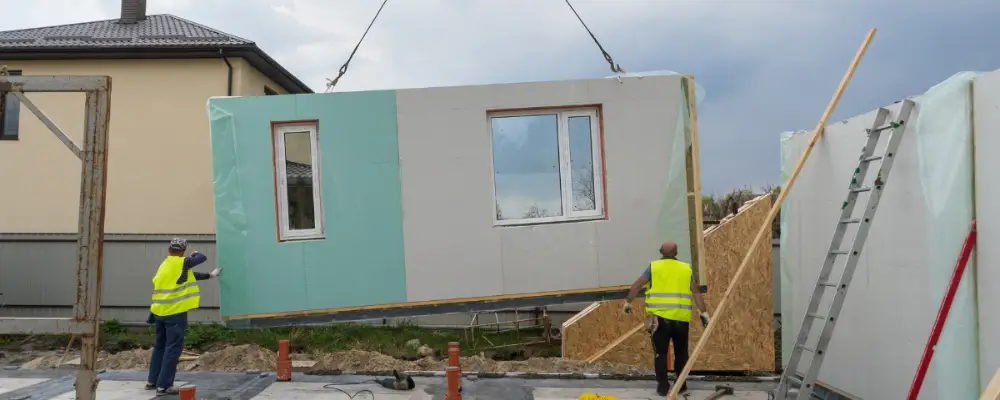More and more people prefer modular construction over the traditional ones. It’s because of the enhanced convenience and affordability. Are you planning to build a new home or residential building? If so, you should consider modular construction to revolutionise the way of building and stay unique from the rest of the world.
Keep exploring this article to learn more about modular construction and identify how it is beneficial to you.
What is Modular Construction?
A modular building can be defined as a building component, which is first partially constructed off-site and later assembled on-site after transportation. Those components of the structure that are constructed in advance are referred to as “modules”. They all, however, use materials that are almost the same, if not the same and have the same standards of construction as the conventional houses built. Rather, modular buildings are used for houses, schools, office buildings, and even hospitals.
One significant advantage of modular construction is that the overall process may be shorter, as some aspects of the work can occur simultaneously with the assembly of the modular project.
Types of Modular Construction
Permanent Modular Construction
Permanent modular construction is used in buildings that will not be moved, remain in one location and can last as long as conventional buildings. Common examples are schools, offices, and homes. Some studies indicate that it is possible to slice construction time by up to 50% using the method.
Relocatable Buildings
Relocatable buildings are defined as temporary structures that can be moved and set up at variable locations. They are sometimes used for classrooms, offices, or even shelters. As they can be reused, they may save as much as 20 percent in costs as compared to original conventional buildings.
Closed Modular Construction
In closed modular construction, entire rooms or large parts of the buildings, including walls, floors, and ceilings, are manufactured in a factory. When the modules are on site, they are assembled, with the minimum additional work to be carried out.
Open Modular Construction
In open modular construction, the parts, such as walls and floors, are never built as a single unit. These modules are joined at the site, and the subsequent plumbing and electrical wiring are completed after assembly.
How Modular Construction Works
Modular buildings are manufactured in a factory. The modules are built to exact measurements so that they will fit perfectly once they are transported to the building site. Working indoors eliminates weather-related delays.
Once the modules are ready, they are transported to the site and assembled. This reduces the man-hours spent on-site by workers. In this way, projects can be completed 30-50% faster than traditional building methods.
Cost Factors in Modular Construction
The two overwhelming advantages of modular construction over the more traditional methods are that it is cheaper and there is less waste. Building in a factory has reduced labour costs and results in fewer wasted materials, which could potentially reduce costs between 10-25%. Adding modules to a site could also add 3-5% to an overall cost. This holds for larger or more considerably larger projects farther from the factory itself.
Modular Buildings versus Conventional Buildings
That would be the case with traditional construction, for everything is built on-site. Weather and labour issues can slow things down. Most of the work in modular construction is completed within a factory; this speeds up the project.
Modularity can finish the building in a much shorter period, precisely by 30-50% faster. Not only that but due to controlled environment modular construction, it also generates much less waste, saving possibly up to 90% of material that would otherwise go to waste on-site.
Uses of Modular Buildings
Modular buildings can be used for a wide variety of purposes:
- Houses: Modular homes are becoming more common. They are most of the time cheaper and can be built in less time.
- Workplaces: Companies can expand more quickly via modular buildings.
- Schools: Temporary classrooms can easily be put up to accommodate the ever-increasing population of students.
- Hospitals: Permanent and temporary healthcare facilities are built by a modular construction process.
- Emergency Shelters: At this point, modular buildings stand very well in providing the need for temporary housing and shelter during natural disasters.
Advantages and Disadvantages of Modular Construction
Advantages
- Faster Construction: Projects with modules are completed up to 50% faster.
- Savings by way of cost: Modular construction can reduce costs by up to 25%.
- Less Waste: Construction in a factory reduces waste by up to 90%.
- High Quality: Errors are minimal because of factory-controlled environments, leading to well-built and higher-quality buildings.
- Reusability: Relocatable buildings can be relocated to save money and resources.
Disadvantages
- Transportation: Transportation costs are higher on-site, where transportation costs of the modules to the site may be expensive.
- Design Limitations: In most of the complex designs, their performance cannot be fully expressed by such modular construction.
- Site constraints: Areas that are inaccessible to transport huge modules or for some reason may not be suitable for modular buildings.
Conclusion
Modular construction is also much quicker and sometimes even cheaper when it comes to building homes, schools, offices, etc. It reduces the construction time by half and fails to waste materials, saving money simultaneously. Although limitations exist, such as transportation costs and design constraints, the significant advantages render modular construction an ideal choice for numerous projects. The number of buildings that are built with modules is on the rise. They are here to stay.
FAQs
Modular buildings can last as long as traditional buildings, often exceeding 50 years or more, depending on the materials used and proper maintenance.
Yes, modular buildings are highly customisable. They can be designed to meet specific needs, from simple homes to complex hospital buildings, allowing flexibility in layout, materials, and finishes.
Yes, modular construction reduces waste by up to 90% and often uses energy-efficient building methods. The controlled factory environment helps minimise material waste and energy consumption.

